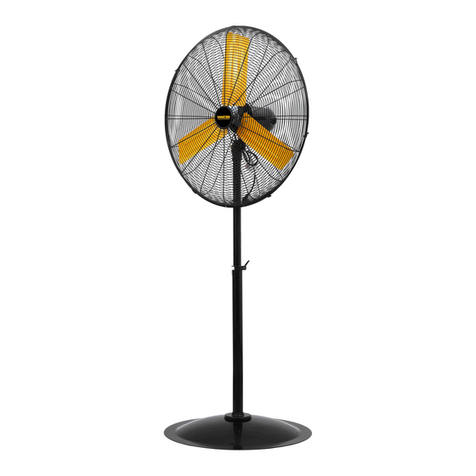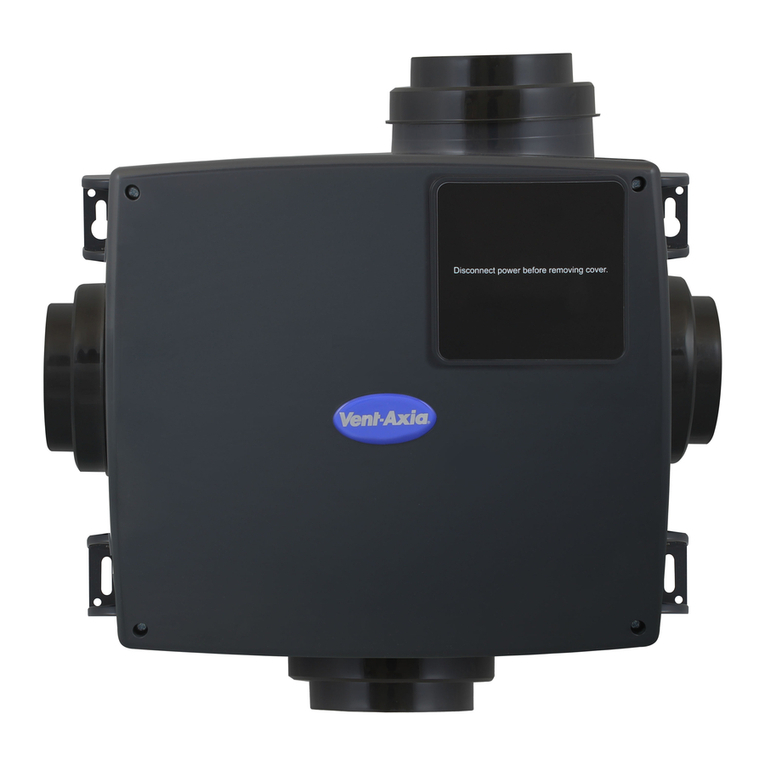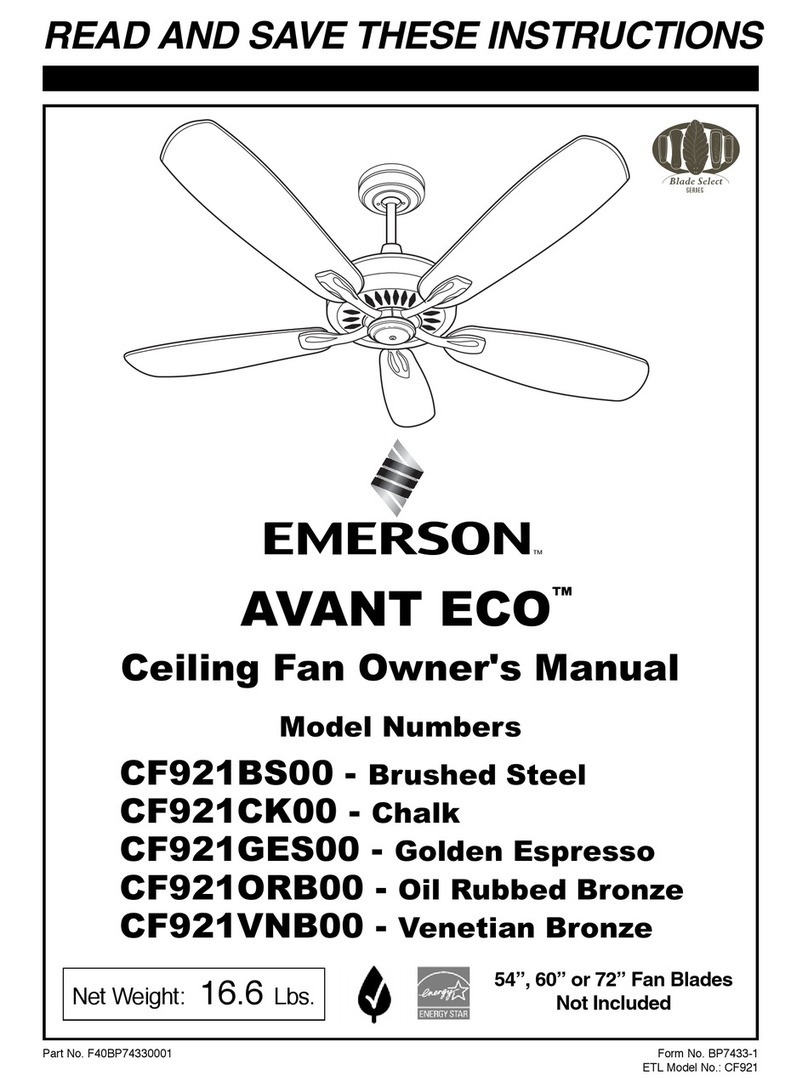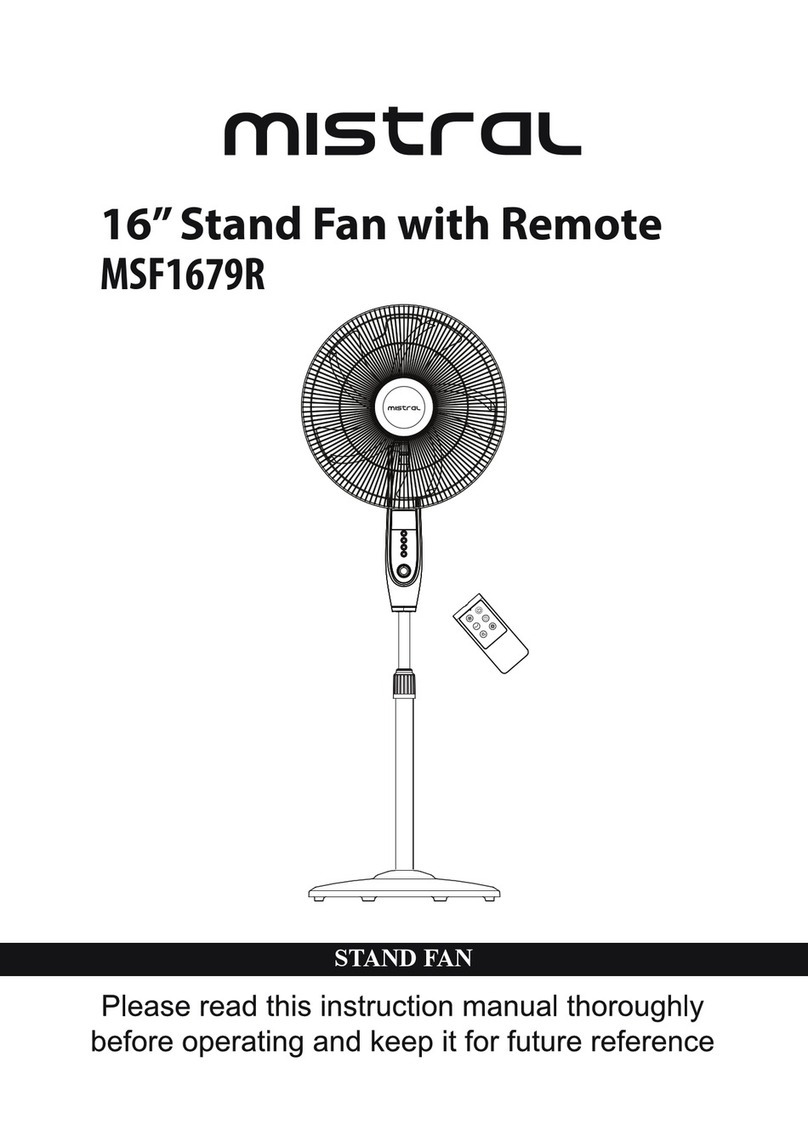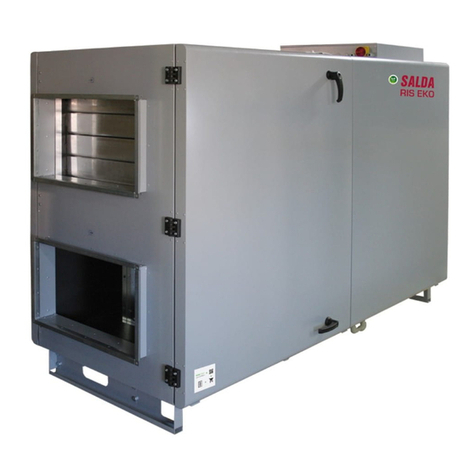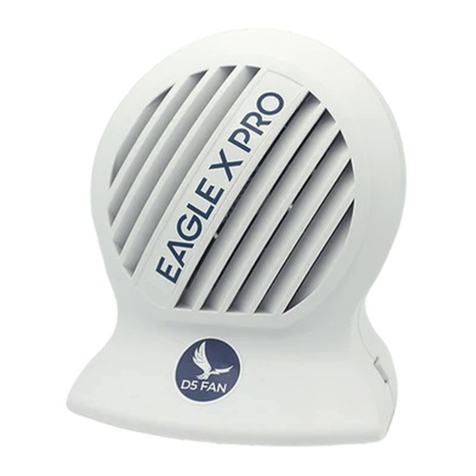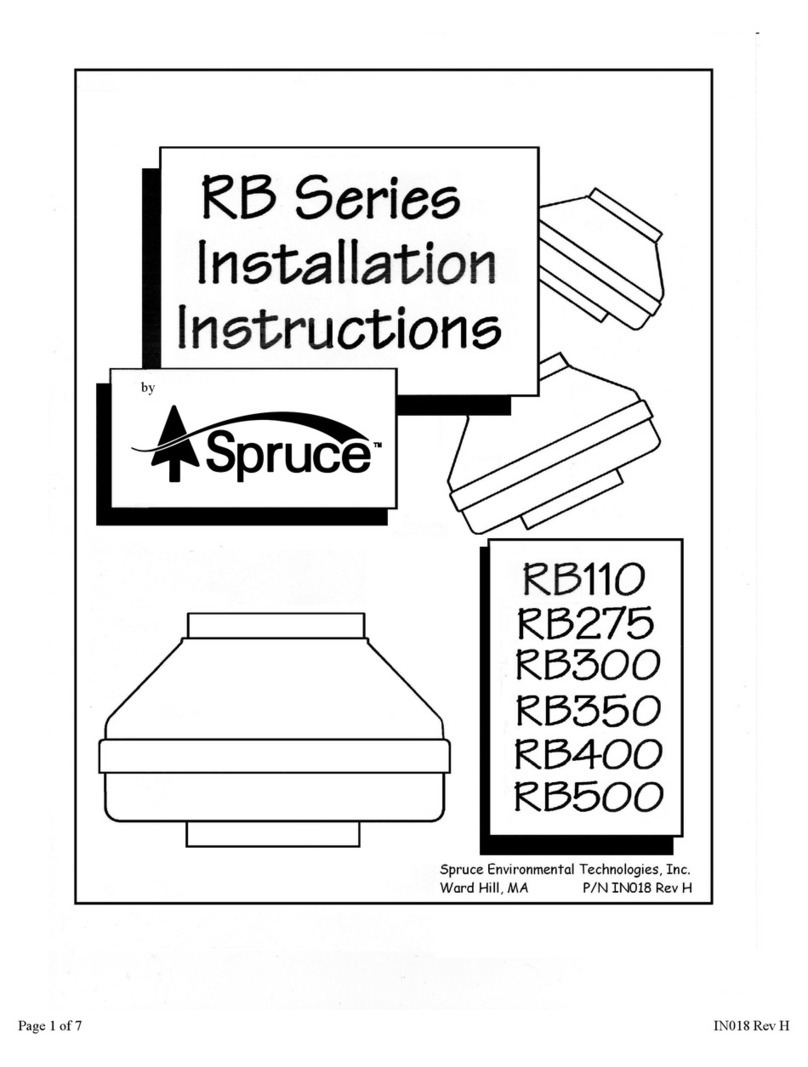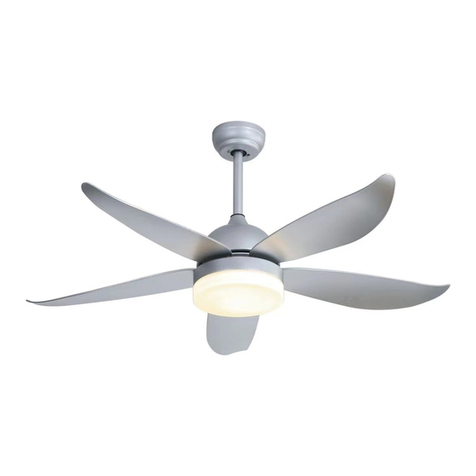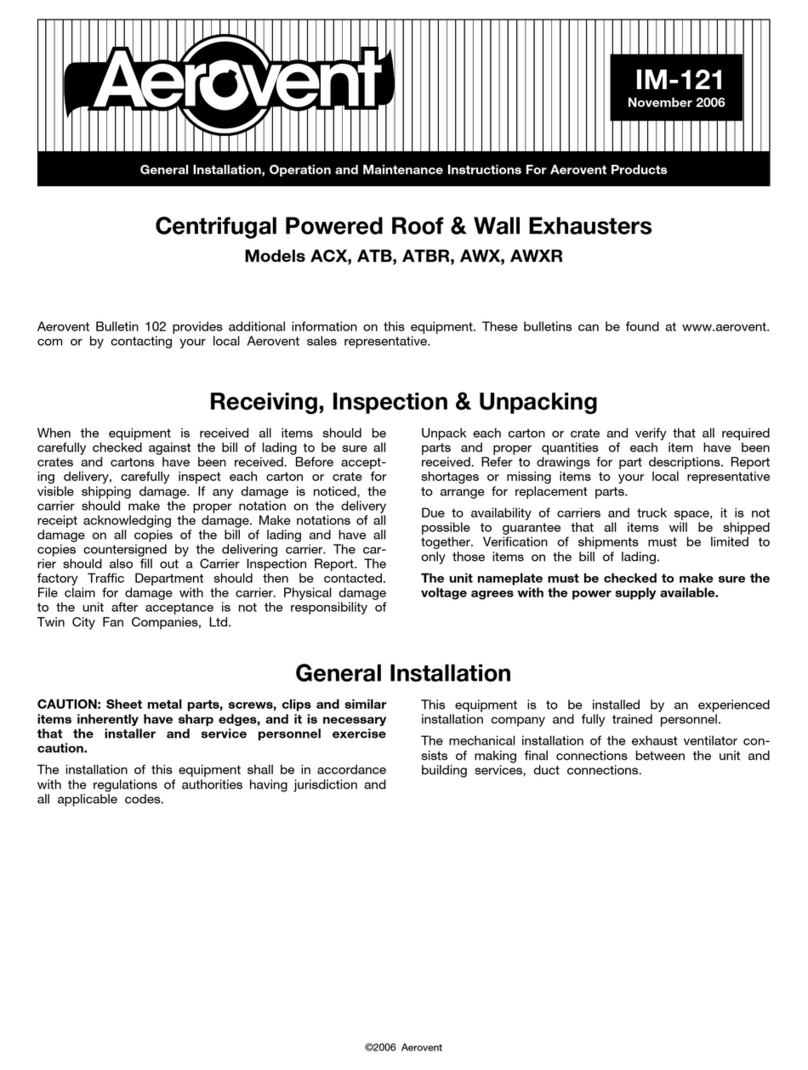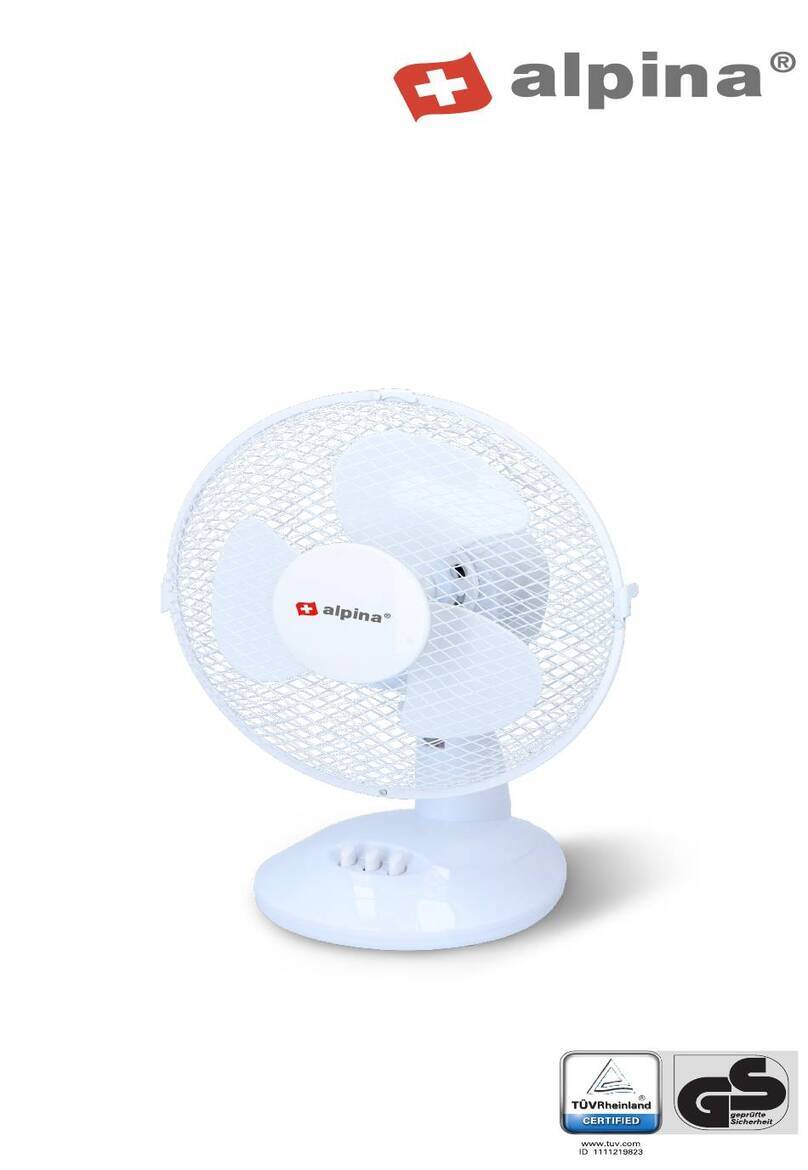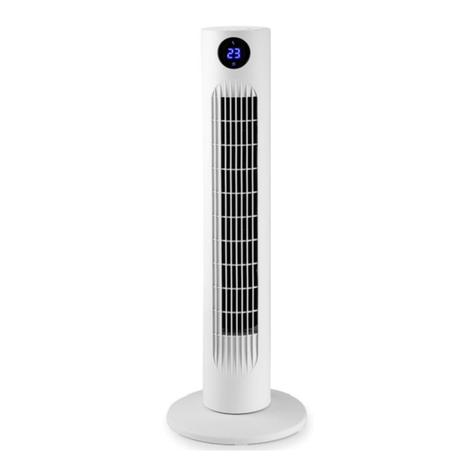INSTALLATION INSTRUCTIONS - IN009 Rev M
RV100 P/N 23012-1, P/N 28040
RV125 P/N 23014-1, P/N 28042
RV150 P/N 23013-1, P/N 28041
RV200 P/N 23016-1, P/N 28049
1.0 Mounting
The RV Series fan may be mounted at an angle without affecting performance, although the
vertical mounting position shown in Fig. 1 is highly recommended. If the vertical mounting
position is not possible, care should be taken to avoid creating a low spot in the fan/duct
system where condensation might accumulate in the fan housing as shown in Fig. 2. In
situations where horizontal mounting is desired and condensation is likely to occur (bathroom
ventilation in cold climates) this problem might be avoided by mounting the fan 30 degrees
beyond horizontal as shown in Fig. 3.
2.0 Ducting
Any type of ducting is acceptable; however, flexible nonmetallic ducting is recommended for
easy installation and quieter operation. Insulated flexible ducting is highly recommended in
cold climates to prevent the warm bathroom air from forming condensation in the ducting
where it is exposed to colder attic air. The outlet of the fan should always be ducted to the
outside. Avoid venting the outlet of the fan directly into an attic area. The excess moisture from
the bathroom can cause damage to the building structure and any items stored in the attic.
Multiple venting points may be connected together using a "T" or “Y" fitting. Straight, smooth
runs of ducting will present the least resistance and maximize system performance.
For quietest performance, the fan should be mounted farther away from the inlet duct, near the
outside vent. A minimum distance of 10 feet is recommended between the fan or T/Y of a
multi-intake system and intake grille(s).
3.0 Backdraft Dampers
Backdraft dampers allow airflow in only one direction, preventing cold/hot drafts from
entering the vented area and minimizing possible condensation and icing within the system
while the fan is not operating. Backdraft dampers are highly recommended at each intake
grille for bathroom ventilation in all cold climate installations.
4.0 Electrical Wiring
All wiring must be performed in accordance with the National Fire Protection Association’s
(NFPA) ”National Electrical Code, Standard #70”-current edition for all commercial and
industrial work, and state and local building codes. All wiring must be performed by a
qualified and licensed electrician. A Ground Fault Interrupter (GFI) circuit is not required in
most installations, check your local codes. Ensure that all exterior electrical boxes are outdoor
rated and properly sealed to prevent water
penetration into the box. A means, such as a weep
hole, is recommended to drain the box.








